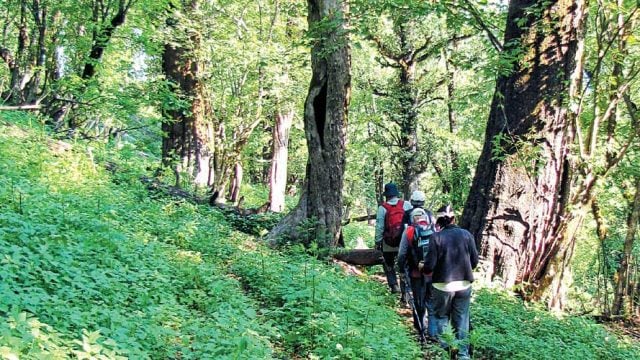I have never seen the Table Mountain in South Africa; chances are that I won’t. But a
Cutting across the numerous twists and turns on the road, you reach a point where you can see the Table Mountain. This is not a regular tourist attraction, but the sight was breathtaking. A mountain with a flat top, it can easily give the famed South African attraction a run for its money. However, this piece is not about the Table Mountain, but the next 30-odd minutes I spent there and a few other things.

I was being driven around Spiti in September upon the insistence of my wife, who also accompanied me. I was enjoying the road trip. While on our way to Lalung monastery, we decided to step out of our car, take a stroll, smoke a cigarette, click a few pictures and be on our way again—10 minutes tops. This was our usual routine on the road while travelling through Spiti. However, on this particular stop, something caught my attention on the side of the road, opposite the mountain.
Was it an ibex, a blue sheep, a squirrel or the famed snow leopard? You guessed wrong; it was nothing but a small group of people—mostly women, and a kid.
I didn’t know them. However, our driver shared an acquaintance with one of the few men in the group. He moved out, and I sought out different angles to make a frame. The setting was an undulating landscape in the middle of the day. Amid all this, I noticed the mirth of the group of travellers who had assembled on the road side. They were having a ball, and my wife had found herself a seat among them.

The little girl accompanying the group was a little bundle of joy, amusing everyone with her tricks. I was invited to join them. I had no idea what they were up to in the middle of nowhere. I chose to investigate the reason of such unbridled fun and frolic. My polite inquiries in broken Hindi revealed that they were heading towards Kaza for work. I asked about the nature of work: manual labour with the Border Road Organisation to fix the roads.
The man in me had to find why there were so many women and so few men headed for such a job. I put the question on the table. The answer was simple. BRO hires more women as they are more efficient. Humbled, I rested my case; no further inquiries.
The next few minutes were spent drinking Tibetan chai—tea mixed with ghee and salt—and simply being overwhelmed by the energy and excitement of my unexpected company.
Here I was, a city slicker trying to fathom the reason of such unadulterated happiness. How is it that a large group of disenfranchised, poor people migrating to the district headquarters for manual labour find so much enjoyment in each other’s company? So much so that it warrants a picnic-like luncheon in the middle of nowhere.
As a privileged middle-class man, I have nearly forgotten the sense of community and camaraderie. I only know about EMIs and my next escapade to break out of boredom. As we parted ways, I was gifted an apple by the group. I had nothing to give back.
Anirban is a 33-year-old IT professional currently based in Noida. He has been travelling across the Indian Himalaya for over a decade now. From treks to road trips and leisure vacations, his desire is to experience as much as possible. His hobby of photography keeps adding to his memories along with his companions.
Himachal Pradesh
travel
India





